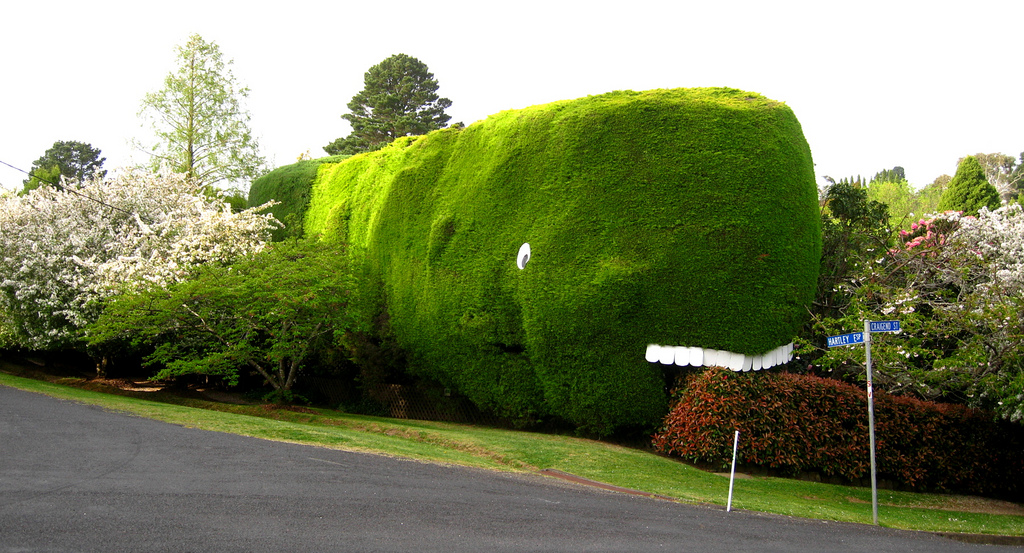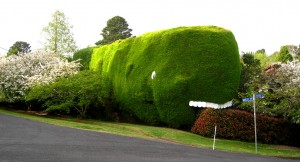Horticultural Tourism as a form of Sustainable Tourism


Tourism industry has a significant effect on the Australian economy. The tourism industry was accounted for 2.5% of Australia’s GDP at a rate of $35 billion to the national economy in the financial year of 2010/2011.This is comparable with $94.8 million contribution of tourism a day to the Australian economy. (Australian Bureau of statistic. “Tourism Satelite account 2010-2011: Key Figures”). Tourism industry engaged 513,700 people in Australia in 2010-11, from which 43.7% were part time. It contributed 8.0% of Australia’s total export earnings in 2010-11 (Australian Bureau of Statistics, “Tourism Satelite Account 2010-11: Key Figures”).
Nature-based and ecotourism activities are the most common activities for both international and domestic tourism in Australia, 12 percent of Australians and more than 40 percent of international tourists visit Australia’s national parks and state parks, wildlife parks and zoological gardens, botanic gardens, municipal gardens and green spaces.
There are different terms such as ecotourism, sustainable tourism, urban green tourism as well as natural-based tourism which are used for horticultural tourism.
Nowadays sustainable tourism is the main part of tourism development, and horticultural tourism could be considered as a green tourism when the tourism development and its activities in the way sustain the culture, the economy, the resources and local community (Fennel, 1999).
The economic benefits play an essential role as a motivation factor in tourism especially when the lives of local people face economic problems, however it can be negative or positive. The negative forms of economic impact can be seen in increasing cost of land (Machlis & Field, 2000b), dependency only on tourism industry (Akis, et al., 1996), and positive impact such as job opportunity (Mason & Cheyne, 2000), more income (Andereck, et al., 2005), and improvement of standard of living (Teye, et al., 2002). An example of horticultural tourism is garden events and flower festivals which attracts many visitors.
Tourism development can affect the lives of local communities in both negative and positive way, because most of sociocultural aspects are connected with personal life. Changing the quality of local people lifestyle is one of the sociocultural impacts of tourism development. Positive impacts are better services and facilities (Coccossis, 1996), infrastructural improvement (Greenwood, 1976), improving cultural heritage and activities (Gilbert & Clark, 1997), cultural exchange and identity (Liu &Var, 1986; Teye, et al., 2002) and negative aspects such as increase in population (Liu, et al., 1987), crime ( Tosun, 2002) and social conflicts (Dogan, 1989).
There are also positive and negative impacts on the natural environment. Creating green habitat for birds, fish and animals as well as generating natural elements which help communities and cities to be green, unpolluted, unsoiled and fresh (Aldous, 2008). Lake of balance between economic benefits of tourism activities and conservation of natural resources (tourism attractions) can damage the natural environment which tourism activity depends on.
One example of horticultural tourism is The Pelican Golf Club, located in Sunshine Coast, Queensland that surrounded by golden beach with 6,359 meter championship golf courses that combined operational plan, decreased costs and helped to improve the environment (Aldous, 2008). It is in heart of the master planned community of Pelican Waters (www.pelicangolf.com.au).
Horticultural tourism is growing in Australia with the goal of minimizing impacts on the environment, support of local culture and bringing economy benefits. Sustainable tourism not only attracts visitors and investment to the region but also conserves the environment.
References:
Akis, S., Peristianis, N., & Warner, J. (1996). Residents’ attitudes to tourism development: the case of Cyprus. Tourism Management, 17(7), 481-494.
Aldous, David, Horticultural Tourism in Australia, Australian Parks and Leisure, Autumn 2008.
Andereck, K. L. (1995). Environmental consequences of tourism: A review of recent research. In S. F. McCool & A. E. Watson (Eds.), Linking tourism, theenvironment, and sustainability (pp. 77-81). Ogden: Dept. of Agriculture, Forest Service, Intermountain Forest and Range Experiment Station.
Australian Bureau of Statistics, “Tourism Satelite Account 2010-11: Key Figures
Coccossis, H. (1996). Tourism and sustainability: perspectives and implications In G. K. Priestley, J. A. Edwards & H. Coccossis (Eds.), Sustainable tourism? European experiences (pp. 1-21). Wallingford: CAB International.
Dogan, H. Z. (1989). Forms of adjustment : Sociocultural impacts of tourism. Annals of Tourism Research, 16(2), 216-236.
Fennel, D. A. (1999). Ecotourism: An introduction. London: Routledge.
Gilbert, D., & Clark, M. (1997). An exploratory examination of urban tourism impact, with reference to residents attitudes, in the cities of Canterbury and Guildford. Cities, 14(6), 343-352.
Greenwood, D. J. (1976). Tourism as an agent of change : A Spanish basque case. Annals of Tourism Research, 3(3), 128-142
Liu, J. C., & Var, T. (1986). Resident attitudes toward tourism impacts in Hawaii. Annals of Tourism Research, 13(2), 193-214.
Liu, J. C., Sheldon, P. J., & Var, T. (1987). Resident perception of the environmental impacts of tourism. Annals of Tourism Research, 14(1), 17-37.
Machlis, G. E., & Field, D. R. (2000). National parks and rural development Washington, DC: Island Press.
Mason, P., & Cheyne, J. (2000). Residents’ attitudes to proposed tourism development. Annals of Tourism Research, 27(2), 391-411.
Teye, V., Sirakaya, E., & S¨onmez, S. F. (2002). Residents’ attitudes toward tourism development. Annals of Tourism Research, 29(3), 668-688.
Tosun, C. (2002). Host perceptions of impacts: A Comparative Tourism Study. Annals of Tourism Research, 29(1), 231-253.
www.pelicangolf.com.au
 Follow
Follow